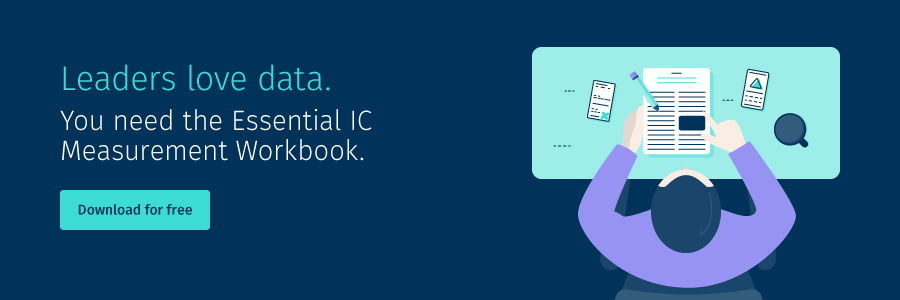4 Sources to help make your employee communications strategy data-driven
By
— August 7th, 2019

You’re ready to make your employee communications strategy data-driven. Maybe you’re getting pressure from the higher-ups to show more demonstrable results, or maybe you’re tired of guessing at what’s working and want to base your actions on actual proof.
A data-driven IC strategy provides considerable benefits. Knowing what your employees respond to empowers you to improve results. And better results — that you can actually prove with clear data — help you demonstrate your value, so your department continues to the get respect and the funding you need.
But measurement can hard if you don't have the right tools. In a Poppulo webinar on creating a successful employee communications strategy, Olga Klimanovich acknowledged: “66% of internal communicators say that measurement is difficult. I am one of those 66%.”

For those of you who know you should bring data into your strategy, but don’t know where to start, she provides some helpful tips on four main sources to turn to for data useful to IC.
1. Human resources (HR) data
Even if the IC department hasn’t been actively collecting data, some part of your larger organization almost certainly has. In particular, Klimanovich recommends looking at your HR department. “I engage with HR because, most of the time, they’re the owners of the engagement survey process,” she says.
If your HR department does engagement surveys, then they have a wealth of valuable data about your employees they can share with you. Analyze the information in the surveys to figure out where your efforts fit into the answers your employees have provided.
And talk to HR about any requests you have for the next cycle of engagement surveys that can help add to the information you have now.
2. Internal engagement data
Whether or not you’ve set up a formal process for communications measurement, there’s a good chance you’re already using tools that collect some amount of engagement data. If your company has an employee intranet, for instance, you likely have data you can access to understand how employees use the website.
“I look at the open and click rates for site visits,” says Klimanovich. “I look at the unique users and returning users. I look at who geographically comes more often and engages with our information.”
Take a serious look at the different software tools used throughout your company and find out what analytics they offer. You may find you’re starting out with a richer view of current employee engagement than you imagined, and it’s just a matter of tapping into what you already have and performing an analysis.
3. Benchmark data
Finding the data that tells you where your organization currently stands is valuable, but it’s just part of the overall story you need. How do you determine whether the engagement rates you’re seeing now are a sign of success, or if they’re telling you the organization has a long ways to go yet?
Klimanovich has an answer to that: “I also look at the benchmarking. How do we compare industry-wide? How do we compare to companies of comparable sizes?”
Internal communications tools like Poppulo supply this kind of benchmark data you can use to see how your current engagement levels compared to where you could be. Having an idea of what’s normal is a crucial component in developing a data-driven strategy based on realistic goals.
4. Anecdotal data from human interactions
Often when we think of data, we think of numbers, charts, and graphs. But Klimanovich reminded us of another important source you shouldn’t discount. “I always keep my ears open for ad-hoc feedback during interactions with colleagues.”
The information you hear directly from employees, whether it be from interest groups you set up or conversations around the coffee machine — what Klimanovich responds to as “soft data” —i s full of insights that add more color and context to the other data you collect.
Open rates tell you how many people are looking at your emails, and analysis can help you come up with some strong conjectures as to why.
But when you hear someone at the water cooler complaining about how they have over 100 unread emails to wade through after a vacation, that’s a direct and clear communication of the kind of “why” you’re looking for. You’d be remiss to overlook it.
- Make Measurement and Ongoing Priority
Once you have the initial data to build your comms strategy with, make sure it includes setting up a more robust and efficient way to measure as you go. Moving forward, you won’t have to chase after data and piece it together. You can collect, organize, and analyze it as you go.
And with the right employee communications analytics tool, you can bring the various sources of data you collect into one place to better track how it all relates.
Making the shift to a data-driven strategy can seem difficult at first, but once you have a good system in place and the right tools to manage it, incorporating the data into how you do your job becomes a lot easier.
For more information on how to create and execute a successful employee communications strategy, watch the full webinar.








